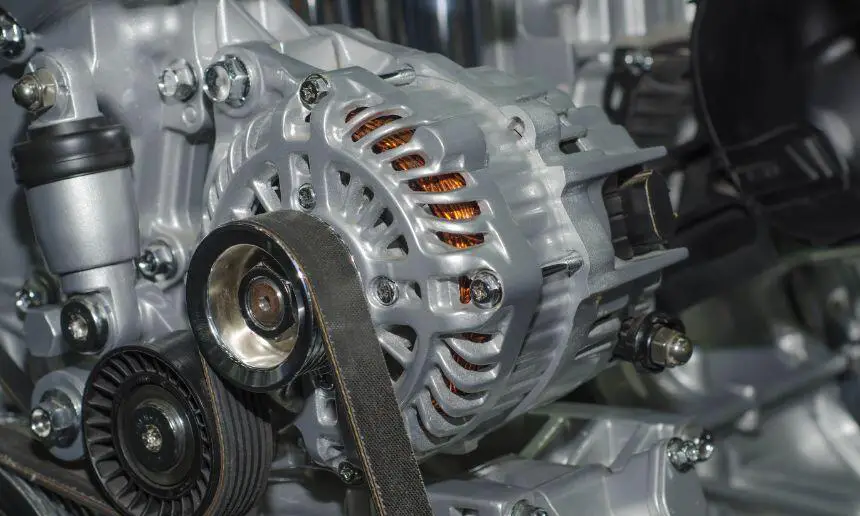Do Golf Carts Have Alternators? Let’s Find Out!
The game of golf, as we know it today, probably wouldn’t be the same without golf carts.
Getting from hole to hole and moving around the golf course would be much more difficult on foot, especially on larger 18-hole courses, which can spread over more than 200 acres.
Not to mention that golf carts are a very convenient way of transporting golf equipment, which can be quite a burden.
This all means that having a golf cart die on you and leaving you stranded on the golf course can be a huge inconvenience.
That’s why it’s important to learn how a golf cart operates, at least the basics of it.
This involves getting a clear picture of how the golf cart is powered and what the engine needs to properly operate.
One of the questions in this field that often confuses golf cart owners is do golf carts have alternators.
Table of Contents
Do Golf Carts Have Alternators?
Whether a golf cart will have an alternator depends on the type of golf cart.
In general, gas-powered golf carts, similar to traditional cars, will have alternators. Often, even if the cart doesn’t feature an alternator, it can be installed later on.
They have an important function in keeping golf carts operational as they keep the batteries charged and prevent them from being overworked.
The way they do this is by converting the mechanical energy to electrical energy.
Depending on the size and type of the golf cart, alternators can also be of different sizes and types.
Most golf carts feature 12-volt alternators, although some larger vehicles may have ones with 24 volts.
The latter, logically, produces more power and charges the battery faster. Commonly, alternators are located in the golf cart’s engine compartment.
However, in some models, it can also be installed in the trunk or below the seat.
Why are Alternators in Golf Carts Important?

As I already said, alternators play an important part in keeping the entire golf cart running and operating smoothly.
Its primary role is to generate electricity for different purposes, necessary for the golf cart’s normal use and operation.
Besides its main role of charging the battery, electricity generated by the alternator is also used to power other electrical components, such as cart lights and other accessories.
In case of a faulty alternator, or one that’s not working at all, the battery will end up drained and you won’t be able to even start a golf cart.
Besides starting the car, the alternator is also responsible for supplying the electrical current to the battery and keeping it charged while the engine is running.
Everyone who lives in areas with a colder climate knows how important this is as cold weather has a negative impact on the battery’s ability to keep charged.
How Does A Golf Alternator Work?
The alternator in gas-powered golf carts operates on the same basic principle as in other vehicles with internal combustion engines and fulfills the same role of transforming mechanical energy into electrical.
Commonly, the alternator is connected to the vehicle’s crankshaft (or crank pulley) by a rubber belt. Because of this, when the engine turns, so does the alternator.
As it works on the principle of a conductor moving relative to a magnetic field, the alternator will produce electromagnetic force and sends the AC current to the battery, charging it in the process.
Benefits of Alternators in Golf Carts

Golf carts that feature an alternator benefit from this in several ways.
Thanks to the alternator, the flow of electricity to batteries is steadier which allows the vehicle to operate more smoothly and helps light shine more brightly and with less flickering.
They also satisfy the increased demands for electricity in golf carts that feature extra features such as heated seats or stereos.
In addition, alternators increase battery durability and increase their lifespan, saving you some money you would spend on battery replacement.
Of course, this also means that you’re less likely to be left stranded on the golf course due to an empty battery and inability to start or run the golf cart.
An alternator additionally can serve as a backup power source in case there’s an emergency.
Different Types of Alternators in Golf Carts
Alternators used in golf carts belong to one of two main types: brushed and brushless.
Each has its own advantages and disadvantages which make them more suitable for a certain type of use. Below is a short overview of both types.
Brushed Alternators
Brushed alternators are the more traditional type used in golf carts. They generate electricity using mechanical brushes, which make them the cheaper of the two and easier to maintain.
Plus, they’re more robust and have a longer life span which makes them a better option for golf carts that are more heavily used, especially on rough terrain.
The downside is that they are noisier and generate more vibration than brushless alternators and are commonly not as efficient.
Brushless Alternators
Brushless alternators, as their name says, don’t feature mechanical brushes but, instead, generate power through electromagnetic induction.
Even though they’re more expensive than their brushed counterparts, they deliver a couple of significant benefits.
They operate more efficiently, work quieter, and feature less vibration. All this contributes to a much smoother golf cart ride.
On the other hand, they’re not as durable as brushed alternators and maintenance is more costly and time-consuming,
Conclusion
Understanding how a golf cart works can save you a lot of trouble and ease the maintenance of your vehicle.
This includes learning about alternators, how they work, and what’s their function.
One of the worst things that can happen to you on the golf course is to have the golf cart battery die on you and leave you stranded without a means of transportation.
The alternator has a significant role in making sure that this doesn’t happen by keeping the battery charged and the golf cart operating smoothly.
Of course, if you own an electric golf cart, none of this matters much to you, as they don’t have alternators and have a different way of charging the battery.




